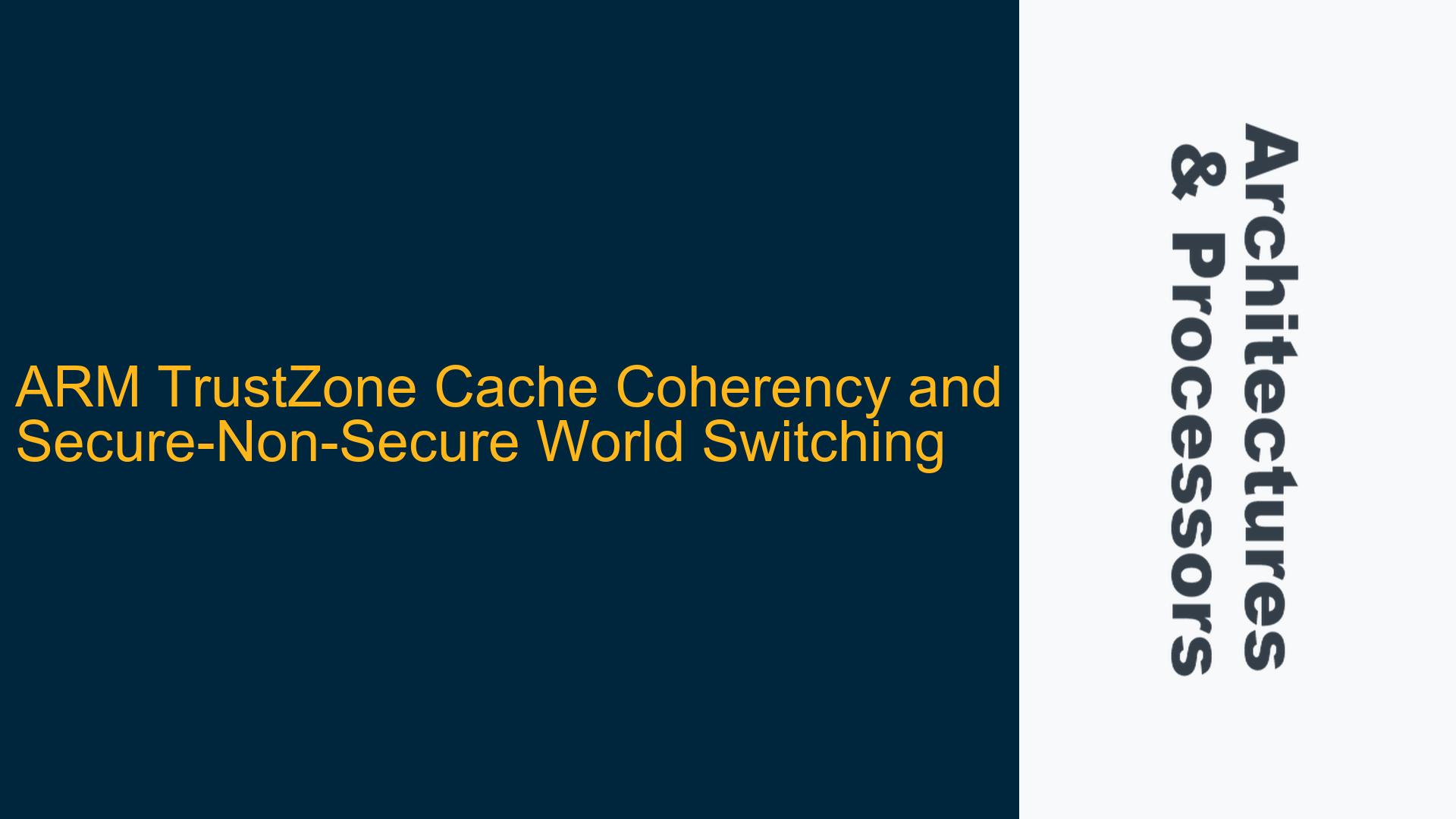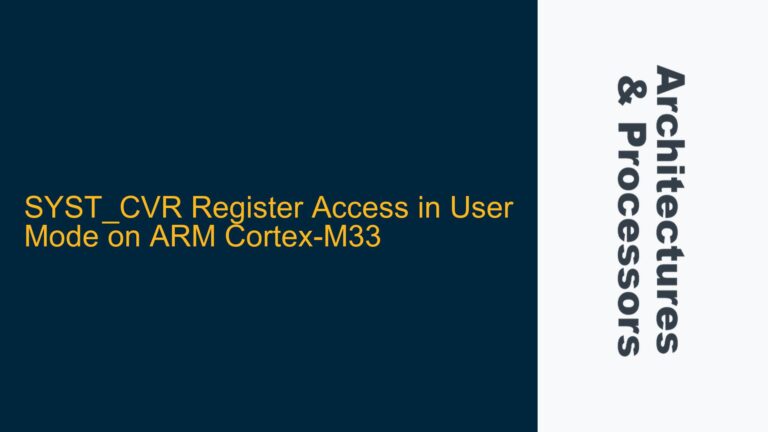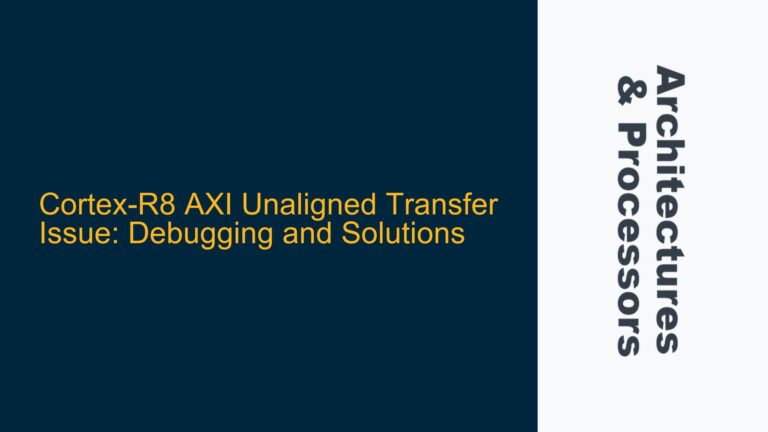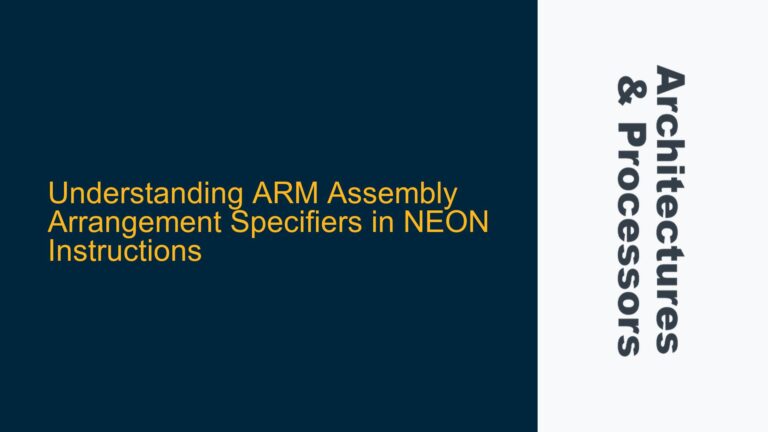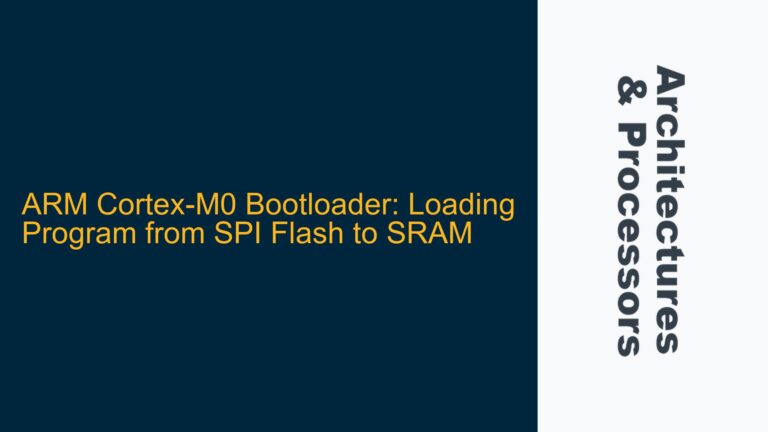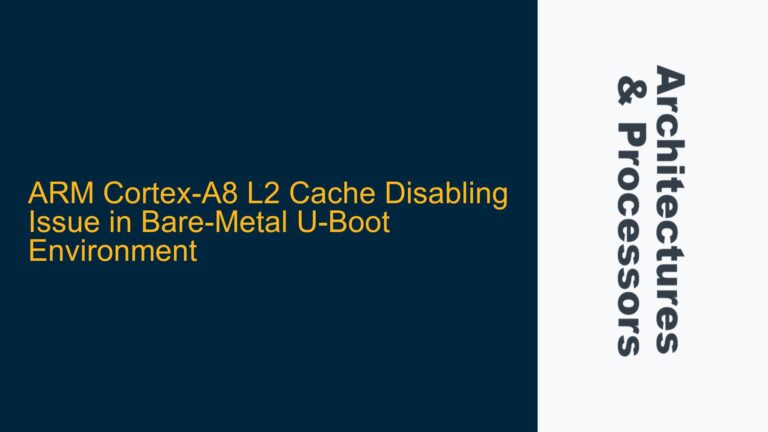Cache Coherency Challenges in ARM TrustZone During Secure-Non-Secure World Switching
ARM TrustZone technology provides a robust security framework by partitioning the system into Secure and Non-Secure worlds. This partitioning ensures that sensitive data and code in the Secure world are isolated from the Non-Secure world, which typically runs less trusted applications. However, one of the critical challenges in this architecture is maintaining cache coherency during world switching. The cache, particularly the L1 cache, often employs a write-back policy, which can lead to potential coherency issues when transitioning between Secure and Non-Secure states. This issue arises because the cache may contain dirty lines that have not been written back to main memory, leading to inconsistencies if not properly managed.
The primary concern is whether ARM TrustFirmware or the underlying hardware mechanisms handle cache coherency during these transitions. Specifically, the question is whether the firmware or hardware invalidates or flushes the cache during world switching, and if so, how this impacts system performance. The write-back policy of the L1 cache means that data modified in the cache is not immediately written to main memory, which can lead to stale data being accessed if the cache is not properly synchronized during world switches.
NS-Bit Implementation in Cache Tags and Its Role in Cache Coherency
The NS-bit (Non-Secure bit) is a critical component in ARM TrustZone technology that plays a significant role in maintaining cache coherency. The NS-bit is part of the cache tag, which means that each cache line is tagged with a Secure or Non-Secure state when it is allocated from Secure or Non-Secure memory. This tagging ensures that code running in the Non-Secure state cannot access cache lines in the Secure state, thereby maintaining the isolation between the two worlds.
In CPUs with TrustZone support, the NS-bit is implemented in both L1 and L2 cache lines. This implementation ensures that the cache coherency is maintained across different levels of the cache hierarchy. When a cache line is allocated, it is tagged with the appropriate Secure or Non-Secure state based on the memory region from which it was allocated. This tagging mechanism allows the hardware to enforce access control policies, ensuring that Secure world data is not accessible from the Non-Secure world.
The NS-bit mechanism eliminates the need for software to flush or invalidate the cache during world switching. Since the cache lines are already tagged with their respective Secure or Non-Secure states, the hardware can automatically manage access to these lines based on the current world context. This approach significantly reduces the performance overhead associated with cache management during world switches, as there is no need to perform costly cache flush or invalidate operations.
Ensuring Cache Coherency Without Performance Degradation in ARM TrustZone
Given the NS-bit implementation in cache tags, ARM TrustZone technology ensures cache coherency without requiring explicit cache flush or invalidate operations during world switching. This mechanism is crucial for maintaining system performance, as frequent cache flushes or invalidations can lead to significant performance degradation, especially in systems with deep cache hierarchies.
The NS-bit tagging ensures that the cache lines are automatically managed by the hardware, based on the current world context. When a world switch occurs, the hardware ensures that only the cache lines tagged with the appropriate Secure or Non-Secure state are accessible. This automatic management eliminates the need for software intervention, thereby reducing the performance overhead associated with cache management.
However, it is important to note that while the NS-bit mechanism provides a robust solution for cache coherency, it is not without its limitations. For instance, in systems with shared caches or multi-core processors, additional considerations may be required to ensure cache coherency across different cores. In such cases, hardware mechanisms such as cache snooping or cache coherency protocols may be employed to maintain consistency across the cache hierarchy.
In summary, ARM TrustZone technology leverages the NS-bit in cache tags to ensure cache coherency during Secure-Non-Secure world switching. This approach eliminates the need for software to perform cache flush or invalidate operations, thereby maintaining system performance. However, in more complex systems with shared caches or multi-core processors, additional hardware mechanisms may be required to ensure cache coherency across different cores.
Detailed Analysis of Cache Coherency Mechanisms in ARM TrustZone
To further understand how ARM TrustZone ensures cache coherency, it is essential to delve into the specific mechanisms employed by the architecture. The NS-bit is a fundamental component, but there are additional hardware and software mechanisms that work in tandem to maintain cache coherency.
Hardware Mechanisms
The primary hardware mechanism for maintaining cache coherency in ARM TrustZone is the NS-bit in cache tags. As previously discussed, this bit ensures that cache lines are tagged with their respective Secure or Non-Secure states. However, the hardware also includes additional features to support cache coherency:
-
Cache Line Allocation Policies: When a cache line is allocated, it is tagged with the Secure or Non-Secure state based on the memory region from which it was allocated. This ensures that the cache line is always associated with the correct world context.
-
Access Control Policies: The hardware enforces access control policies based on the NS-bit. When a world switch occurs, the hardware ensures that only cache lines tagged with the appropriate Secure or Non-Secure state are accessible. This prevents unauthorized access to Secure world data from the Non-Secure world.
-
Cache Snooping and Coherency Protocols: In multi-core systems, cache snooping and coherency protocols are employed to maintain consistency across different cores. These protocols ensure that all cores have a consistent view of the memory, even when cache lines are shared between Secure and Non-Secure worlds.
Software Mechanisms
While the hardware provides the foundational mechanisms for cache coherency, software also plays a role in ensuring that cache coherency is maintained. ARM TrustFirmware, the reference firmware for ARM TrustZone, includes several features to support cache coherency:
-
Memory Barrier Instructions: ARM TrustFirmware uses memory barrier instructions to ensure that memory operations are properly ordered. These instructions prevent reordering of memory accesses that could lead to cache coherency issues.
-
Cache Management Instructions: Although the NS-bit mechanism reduces the need for explicit cache management, ARM TrustFirmware may still use cache management instructions in specific scenarios. For example, when transitioning between different security states, the firmware may use cache invalidate or clean instructions to ensure that the cache is in a consistent state.
-
Secure Monitor Calls (SMC): ARM TrustFirmware uses Secure Monitor Calls (SMC) to manage transitions between Secure and Non-Secure worlds. These calls ensure that the hardware and software are synchronized during world switches, preventing cache coherency issues.
Performance Considerations
One of the key advantages of the NS-bit mechanism is that it minimizes the performance overhead associated with cache management during world switches. By eliminating the need for explicit cache flush or invalidate operations, the system can maintain high performance even with frequent world switches.
However, there are scenarios where performance may still be impacted. For example, in systems with deep cache hierarchies or shared caches, additional cache management operations may be required to maintain coherency. In such cases, the performance impact will depend on the specific hardware implementation and the frequency of world switches.
Best Practices for Ensuring Cache Coherency
To ensure optimal cache coherency and performance in ARM TrustZone systems, the following best practices should be considered:
-
Leverage Hardware Mechanisms: Utilize the NS-bit and other hardware mechanisms provided by ARM TrustZone to minimize the need for software-based cache management. This will help maintain high performance and reduce the risk of cache coherency issues.
-
Optimize World Switch Frequency: Minimize the frequency of world switches to reduce the performance impact of cache management operations. This can be achieved by optimizing the design of Secure and Non-Secure world applications to reduce the need for frequent transitions.
-
Use Memory Barrier Instructions: Ensure that memory barrier instructions are used appropriately to prevent reordering of memory accesses that could lead to cache coherency issues.
-
Monitor Cache Performance: Regularly monitor cache performance to identify potential bottlenecks or coherency issues. This can be done using performance profiling tools and hardware performance counters.
-
Implement Robust Testing: Implement robust testing procedures to validate cache coherency in different scenarios, including world switches, multi-core operations, and shared cache configurations.
Conclusion
ARM TrustZone technology provides a robust framework for maintaining cache coherency during Secure-Non-Secure world switching. The NS-bit in cache tags is a critical component that ensures cache lines are properly tagged with their respective Secure or Non-Secure states, eliminating the need for explicit cache management operations. This mechanism, combined with additional hardware and software features, ensures that cache coherency is maintained without significant performance degradation.
However, in more complex systems with shared caches or multi-core processors, additional considerations may be required to ensure cache coherency. By leveraging hardware mechanisms, optimizing world switch frequency, and implementing robust testing procedures, developers can ensure that their ARM TrustZone systems maintain high performance and reliability.
In summary, ARM TrustZone’s cache coherency mechanisms, particularly the NS-bit in cache tags, provide an efficient and effective solution for maintaining cache coherency during world switching. By understanding and leveraging these mechanisms, developers can build secure and high-performance embedded systems that meet the demands of modern applications.
